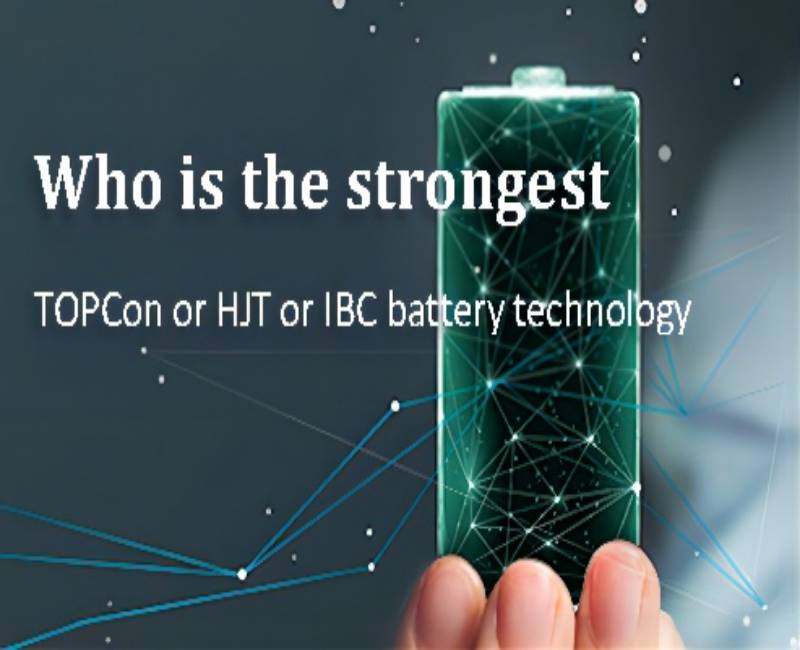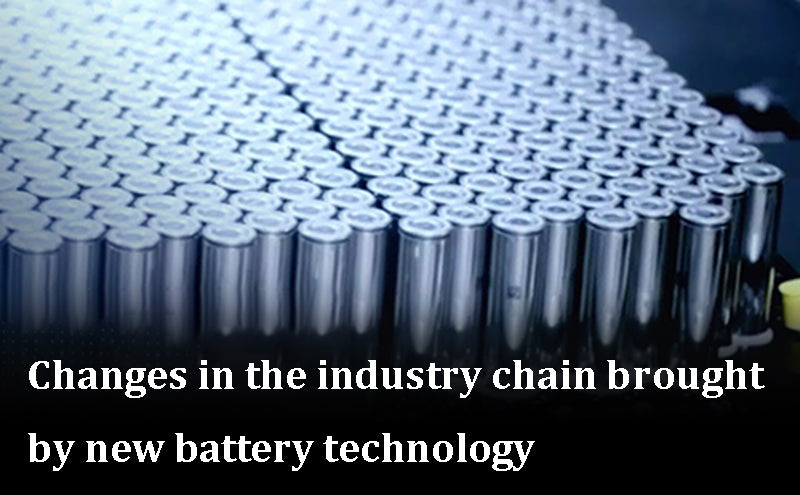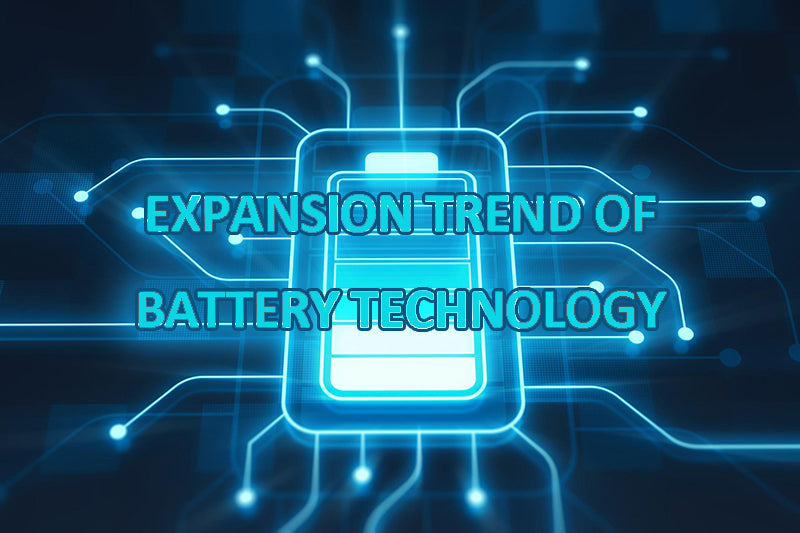
Main content:
HJT, TOPCon, IBC three photovoltaic cell technology routes are currently more competitive. They bring new changes in the industry chain to the new battery technology, but which of these three technologies has more advantages and development prospects? We can carefully compare and understand.
The future competitiveness of the three new battery technologies
- Origin: 21 years PERC mass production average efficiency of 23.1% approaching its theoretical limit of 24.5%. N-type silicon wafers have natural advantages in terms of less sub-life, etc., and higher efficiency limits.
- Technology principle: The core structure of PV cell is PN junction and electrode, efficiency loss is mainly divided into optical and electrical loss, HJT & TOPCon reduce electrical loss, IBC reduce optical loss.
- Efficiency: IBC (stacked) > TOPCon (bifacial) > HJT TOPCon: achieves passivation contact without opening holes, future upgradeable POLO structure, double-sided TOPCon theoretical limit up to 28.7%.
- HJT: Crystalline silicon based/amorphous silicon based heterojunction forming PN junction, with intrinsic amorphous silicon passivation film plated between crystalline silicon and amorphous silicon, theoretical limit up to 28.5%.
- IBC: The electrode is placed on the back side to reduce the light shading loss and use tunneling oxide layer to do electron transfer, which can be stacked with TOPCon or HJT battery technology in the future, and the upper limit of efficiency can reach 29.1% after stacking.
- Cost: IBC (P-type) > TOPCon (single-sided) > HJT
- Sub-route: TOPCon relies on silver consumption reduction and thin-sheeting. HJT relies on low-temperature silver paste localization, silver consumption reduction, thin-sheeting and equipment cost reduction. IBC relies on mask process optimization, thin-sheeting and equipment cost reduction.

- Sensitivity analysis: For every 1pct increase in efficiency, yield and CTM, the cost can be reduced by 14, 1 and 3 cents respectively, and for 10μ wafer thinning, the cost can be reduced by 4 cents. It is expected that the technical economy of new cells will surpass PERC in 23 years.
- Mass production: TOPCon (single-sided) > IBC (P-type) > HJT TOPCon: 29GW in production, over 40GW planned for 22 years, leading mass production average efficiency 24.5%.
- HJT: Already 5GW in production, planning to exceed 9GW in 22 years, average efficiency of leading mass production 24.5%.
- IBC: Already 0.2GW in production, 22 years planning over 8.5GW, leading mass production average efficiency 24%.
- Conclusion: Short-term N-type TOPCon and P-type IBC may be more cost-effective options, medium-term coexistence of various routes (HJT efficiency potential, the other two low cost), long-term or will be transformed to TBC & HBC.
Changes in the industry chain brought about by new battery technology
Silicon wafers
Large size and thin wafers have outstanding advantages in terms of cost reduction in the industry chain, establishing the core battery technology trend in the wafer segment. 2022 silicon prices continue to be high, also accelerating the process of thin wafers. While lithium ion battery prices are also changing. In addition, with the difficulty of further thinning conventional diamond wire, whether tungsten diamond wire can replace conventional diamond wire is also a hot topic of industry concern.Cell
With the development of PERC efficiency is close to its limit efficiency, N-type TOPCon and HJT and xBC battery technology with higher theoretical efficiency are expected to become the next generation of mainstream battery technology. TopCon because of the more similar battery technology route with PERC and relatively low production costs, the most rapid development, TOPCon is expected to reach 20% of the market share of shipments in 2023.

In terms of HJT, with the continuous expansion of Huasheng, Akcome and Risheng, HJT capacity is expected to reach 40GW in 2023, and the penetration of HJT battery technology is expected to accelerate with the improvement of HJT ecosystem and production economy. With the continuous optimization of yield and cost, xBC battery technology is expected to win a larger market share in the scenario of distributed power plants with higher requirements for appearance by virtue of its higher face value and power.
Modules
High power and low cost are the goals that module manufacturers have been pursuing. With the large size determining its mainstream status, module companies have returned to the track of improving module efficiency and reducing costs. With the continuous penetration of N-type battery technology, in which N-type module packaging needs to meet the characteristics of low water permeability.
The demand for adhesive film containing POE components will usher in greater growth, thus causing structural changes in the demand for adhesive film particles. And whether EVA and POE particles can meet the needs of conventional components and N-type components, is also a hot spot of concern for the industry.
Expansion trend
JinkoSolar is the leader in TOPcon battery technology, with 16GW of TOPcon modules in Hefei and Jianshan nearing full production, and is expected to ship 10GW of TOPcon modules in 2022. JinkoSolar is the leader in N-type TOPcon battery technology, with 16GW of projects in Hefei and Jianshan nearing full production, and TOPcon module shipments expected to reach 10GW for the year.
Plans It is expected that the new TOPcon production capacity will reach 49.8GW in FY22 (including projects under construction and under tender), and the large-scale industrialization of TOPcon will explode this year. By the end of 2021, China's HJT capacity will be 5.57GW, with 4.8GW to be built in 2022 and at least 10GW of heterojunction capacity by the end of 2022.

There are mainly two types of Chinese participating companies, one is the traditional battery companies layout heterojunction: Tongwei, Atos, Orient Sunrise, JA, Longi, Aixu, etc.. In addition to the 1GW capacity of Tongwei, other traditional enterprises are mainly in the pilot line. Secondly, the new entrants layout heterojunction: Huasheng, Jinneng, Mingyang Intelligent, Jingyang Glass, etc.
The new entrants are represented by Anhui Huasheng, whose heterojunction capacity is more than 1GW, in order to achieve overtaking with battery technology iteration. At present, the main reason that restricts the development of HJT is the cost issue, HJT equipment, paste, thin film, high efficiency four major cost reduction path is relatively clear, after the cost reduction landing, HJT will officially open a new development.
TOPcon, P-IBC battery technology has the expansion cost performance, the short-term parallel development for different application scenarios, HJT battery high cost problem is expected to form a unified technical route. Combining the development background of different technical routes, cost, efficiency, yield, double-sided rate, equipment compatibility, process complexity, application scenarios and other factors, for the short term, TOPcon and P-IBC batteries will be developed in parallel through differentiated market demand.
The long-term will be formed by HJT battery technology unified route, expansion node depends on its efficiency and cost reduction battery technology landing, need to track the attention of HJT equipment, metalization We need to follow up the progress of HJT equipment and metallization battery technology to reduce the cost.
Summary
In the short term, TOPCon and P-type IBCs have advantages, and in the medium term, TOPCon, HJT and IBCs may coexist. In the long term, it is expected to transform to TBC & HBC, and under the new battery technology change, it is more optimistic about equipment, cell components, silver paste and silver powder.
Related article: chemical batteries, nickel metal hydride battery, long term energy storage















